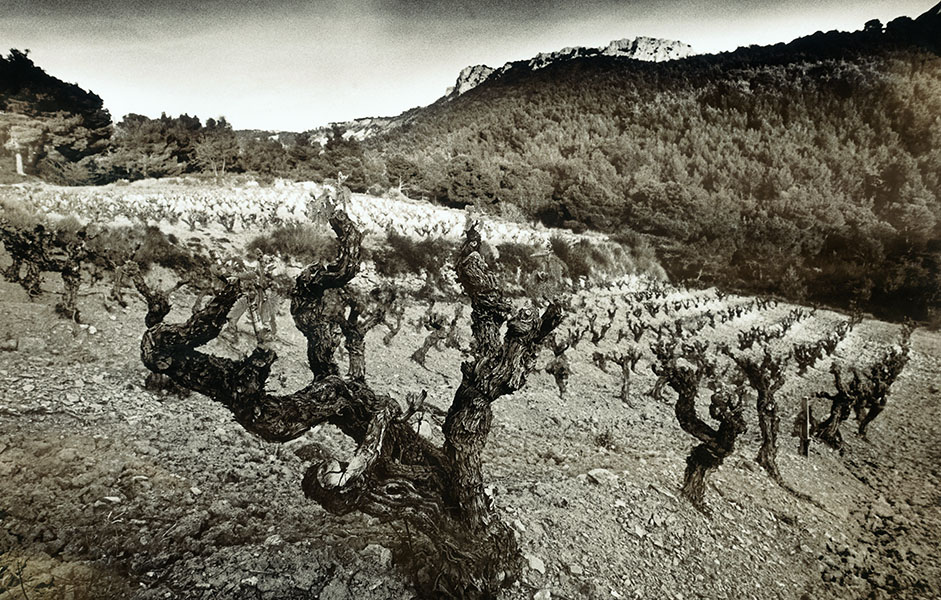Geography
Domaine Les Pallières lies in the northeast of the municipality of Gigondas, in the French department of Vaucluse. All its plots are in the Gigondas AOP area. The estate is equidistant from the towns of Orange, Carpentras and Vaison-la-Romaine (15-20 km away). Avignon, the chief town of the Department of Vaucluse, is 35 km away. Most of the vine-planted plots are situated around the buildings; the furthest away is three kilometres from the road. Although the plots are scattered, no reparcelling was required: the estate was bought as a single piece of land, and is entirely owner-operated. The estate totals 135 hectares. The utilised agricultural land planted with vines covers 25 hectares. The other 110 hectares is woodland.
Soils
Most of the estate’s vineyards are arranged in single-row terraces to cope with the very steep slopes. The shallow soil sits on a layer of very compact red clay, and is partly covered by limestone rockslides from the Dentelles de Montmirail massif. The higher you go, the greater the proportion of scree.
This complementary match of soils and scree allows rainwater to seep deeper. This combination also promotes the night-time storage of solar energy, thus prolonging the activity of the plants. The clay-rich soils are typical of Grand Cru terroirs.
Eugène Raspail, in a book dedicated to his uncle François-Vincent, gave a description of the Gigondas terroir, within the Dentelles de Montmirail, that still applies today:
“The topology of the Gigondas area presents three principal and parallel chains, running west to northeast along a curve, the centre of which is in the northwest. The crest line of these three chains consists of a grey Jurassic limestone. On the southern side, the first line covers black clay from the Oxfordian. To the north, the third line is covered by Lower Neocomian terrain, Gault clay, green sandstone and chloritic chalk. The two intermediate valleys (Col d'Alsau and Buissière) belong wholly to the Lower Neocomian. In the latter valley, in the district of Cayron, clay-rich marls alternate with banks of blue and yellow limestone.”
Climate
This terroir has a four-part climate:
- two dry seasons (a short winter and a very long, intensely dry summer)
- and two rainy seasons: autumn (sudden and abundant rainfall) and spring.
Its Mediterranean climate is an exceptional asset:
- The Mistral wind keeps the vineyards healthy
- Rainfall in each season differs markedly
- Very hot summer temperatures
The name of the Pallières locality certainly has its roots in the word palier (step, stage, level) – a reference to the difference in level between the rows of vines planted there. You walk through these vineyards as if climbing a giant stairway, whose steps, though evenly spaced, vary in gradient depending on the slope.




